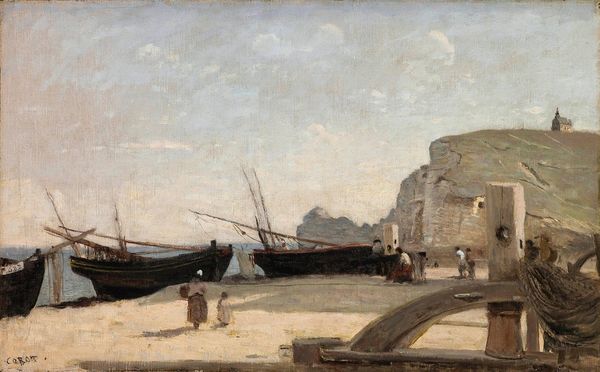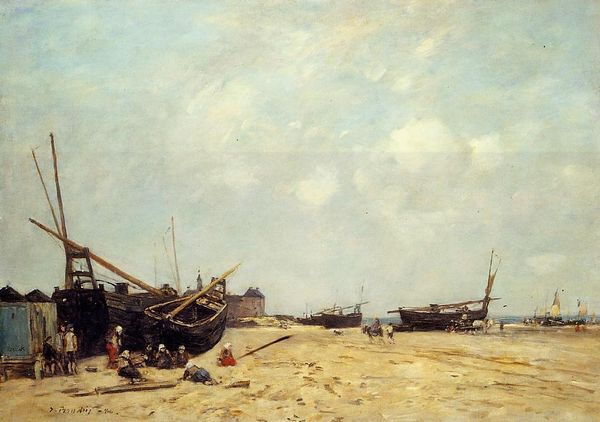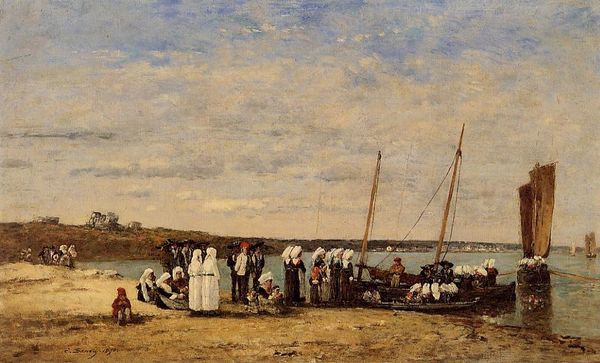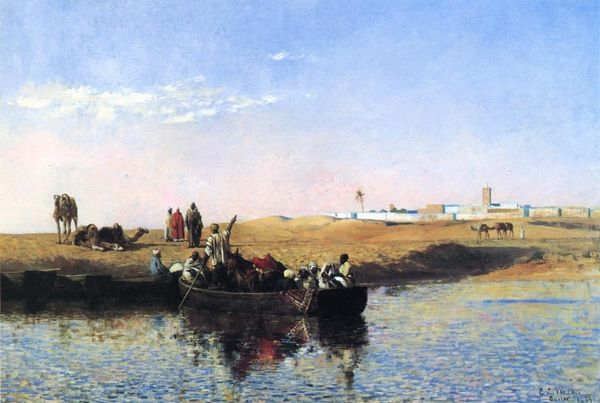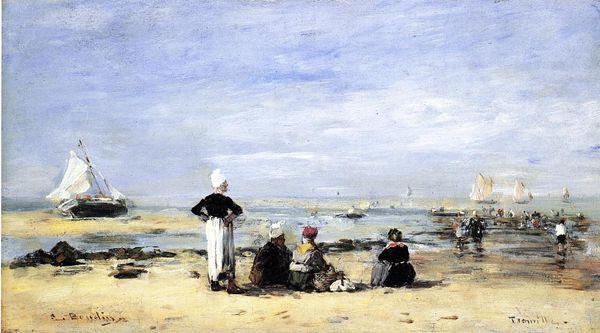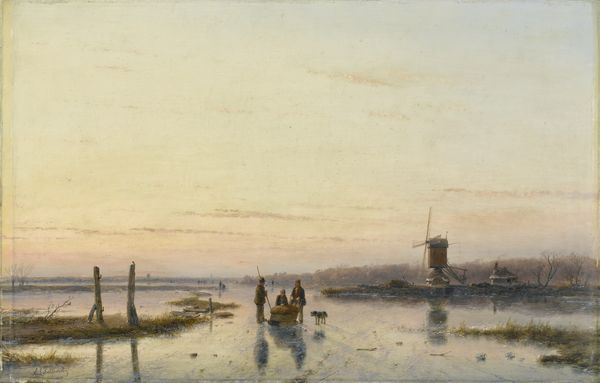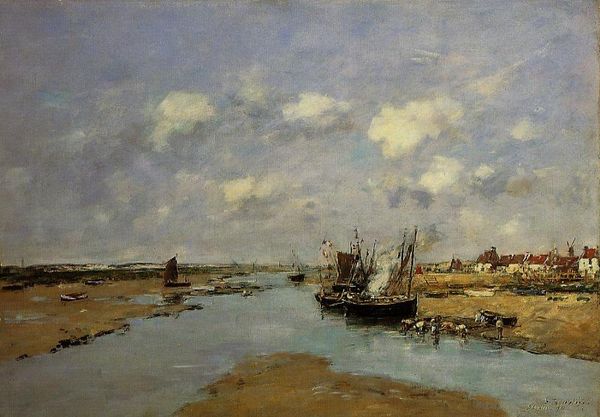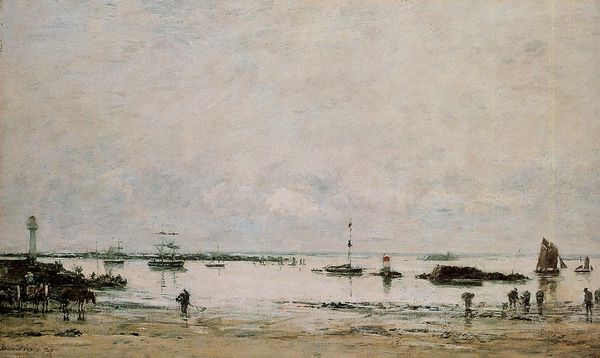
plein-air, oil-paint
#
impressionism
#
plein-air
#
oil-paint
#
landscape
#
painted
#
figuration
#
oil painting
#
cityscape
#
genre-painting
#
realism
Copyright: Public domain
Curator: Let's turn our attention to Eugène Boudin’s "Women on the Beach, Rough Seas," painted around 1870. Boudin, of course, was a crucial precursor to Impressionism, and this oil on canvas, currently in a private collection, provides a key insight into his process and the social context of beach painting. Editor: My initial impression is melancholy. There's a kind of subdued energy. The rough sea, even rendered somewhat delicately, and the covered figures seem to indicate a resistance to the elements, to exposure. Curator: Absolutely. Note Boudin's plein-air technique. The materiality here, the paint itself, captures the damp atmosphere. Consider also the developing leisure industry; beaches like this became sites of both labor, for those connected to fishing, and increasingly, consumption, with the emergent beachside tourism shaping coastal economies and class relations. Editor: And look at those figures; a row of women clustered near the turbulent water. They strike me as symbolic watchers on the edge of things, a reflection of a societal position – observing, experiencing, but perhaps not fully participating in, the rough and tumble of life, if that's not too dramatic a reading! There's definitely a feeling of contemplation, even resignation, imbued in their postures. Curator: Perhaps. I see less emphasis on overt symbolism and more on the realities of how painting itself was produced. These rapid, almost sketch-like brushstrokes – indicative of the demand for quick, readily sellable scenes that satisfied the emerging tourist market along the Normandy coast. The artistic choices respond directly to economic imperatives. Editor: Even the roughness of the seas contributes! The churning waves become a symbol of emotional unrest. These beach scenes were popular then but continue to resonate, evoking timeless themes of humanity and nature, the eternal back and forth. Curator: Agreed! Looking at it from the materialist perspective helps contextualize this apparent timelessness as tied to production – the supply chain of the pigment, the market conditions affecting artistic choices. It provides insight not only into Boudin’s work, but into broader issues of art making and cultural commodification at the turn of the century. Editor: Indeed. A painting which seemingly offers gentle contemplation, upon closer examination, certainly holds deeper resonances, both in terms of human experience and the wider social currents of its time.
Comments
No comments
Be the first to comment and join the conversation on the ultimate creative platform.

